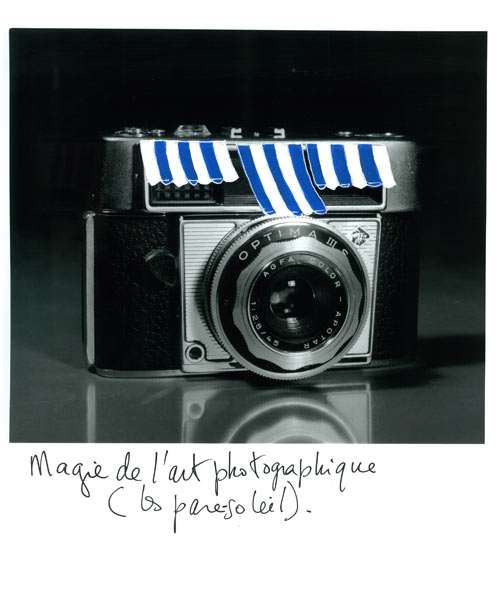MOGARRA – GP&N VALLOIS
36 rue de Seine, 75006 Paris
“Inanimate objects, have you a soul that can unite with our soul, and the power to love?”
Alphonse de Lamartine
So where has he got to, Joachim Mogarra, that unpredictable artist, poet of everyday objects, historian who mocks the great classical texts? That sporadic demiurge, child lost in the world of grownups, master magician and gatherer of outlandish images? I left him hanging out with Dante and now, not having been able to talk to him for a few days, I fear he’s off down memory lane with Lamartine; the lane not of landscapes held dear, but of wordplay and, dare I say it, roleplay.
Never believe him when he suggests you should meet his pack of dogs, because it’s certainly no pack and they’re not even dogs: just sober china figurines that probably don’t even belong to him. On the other hand, stop and think when, after the documentary photographer pose – a latter-day Atget bent on recording the least doorknocker, the most commonplace shop sign, the most elaborate staircase shape – he slips into the garb of the contemporary artist who, in the Becher vein, is out to pin down the nomenklatura of the world’s top dogs. Here’s someone with an unerring grasp of the rules of the game – or, more exactly, of the chapters in the art history books, especially the one on the New Objectivity in 1930s Germany: that exaltation of the real, the quotidian, in all its ordinariness and verity, which the Bechers would later conceptualise in a wedding of strict photographic protocol and seriality.
In the course of a brief emulation of a casting director from one of the classy fashion mags, he got his subjects together one by one, checking out the calibre of their coats and making sure their size was right. He taught them to pose nobly, but with heads cocked endearingly to one side; he scrupulously adjusted the angle of the medals hung around their necks or the shape of the bow on their heads; and then he photographed all these remarkable animals frontally and on the same scale. Next, to boost their proud demeanour and set them apart from mere everyday dogginess, he arrayed them against a neutral backdrop that highlighted their purity and naivety at the same time as it made the whole thing ridiculous. For Mogarra never tells us the truth and only rarely takes a stance, leaving us to our free will and our doubts.
Setting his canine friends to one side for a while, our artist transported his little theatre of the absurd into the pseudo-industrial world of the camera, feigning a patient, step-by-step historical description in a fake advertising catalogue he then gleefully put through the mill via an astute analysis of the evolution of consumer uses and styles in the field. Taking as usual something that really exists – in this case the camera – as his initial postulate, he turns it into a meta-image: as a photography tool invading the entire visual field, the camera is confronted with itself. And like an advertising whiz-kid Mogarra uses paint to retouch the rough of what is doubtless destined to become a highly personal industrial idea.
©
